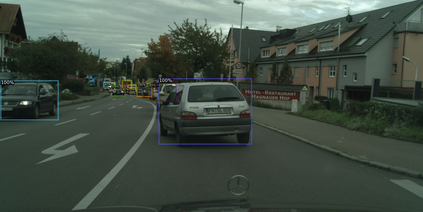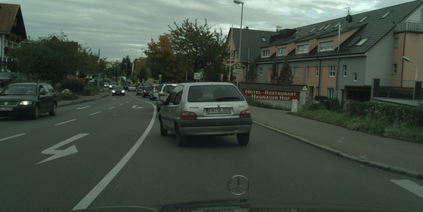Domain shift is a well known problem where a model trained on a particular domain (source) does not perform well when exposed to samples from a different domain (target). Unsupervised methods that can adapt to domain shift are highly desirable as they allow effective utilization of the source data without requiring additional annotated training data from the target. Practically, obtaining sufficient amount of annotated data from the target domain can be both infeasible and extremely expensive. In this work, we address the domain shift problem for the object detection task. Our approach relies on gradually removing the domain shift between the source and the target domains. The key ingredients to our approach are -- (a) mapping the source to the target domain on pixel-level; (b) training a teacher network on the mapped source and the unannotated target domain using adversarial feature alignment; and (c) finally training a student network using the pseudo-labels obtained from the teacher. Experimentally, when tested on challenging scenarios involving domain shift, we consistently obtain significantly large performance gains over various recent state of the art approaches.
翻译:在特定领域(源)培训的模型接触不同领域(目标)的样本时,在特定领域(源)培训的模型效果不佳时,域转移是一个众所周知的问题。可以适应域转移的不受监督的方法非常可取,因为这些方法可以使源数据得到有效利用,而不需要目标的额外附加说明的培训数据。实际上,从目标领域获得足够数量的附加说明的数据既不可行,又费用极高。在这项工作中,我们处理物体探测任务的域转移问题。我们的方法取决于逐渐消除源与目标领域之间的域转移。我们的方法的关键要素是:(a) 将源与目标领域在像素一级进行测绘;(b) 使用对称对称对称对称对称对称,在绘图源和目标领域培训教师网络;(c) 最后,利用从教师那里获得的假标签培训学生网络。实验,在对涉及域转移的富有挑战的假设进行测试时,我们始终在近期各种艺术做法中获得显著的业绩收益。









